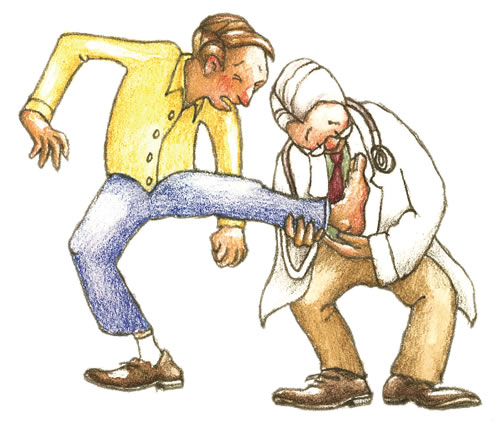Foot & Ankle Arthritis: Baby Boomers Aren’t Backing DowN
Eric Caporusso, DPM, FACFAS
Podiatric Medicine
Chippewa Valley Orthopedics & Sports Medicine
Eau Claire
They danced to the Beatles, the Rolling Stones and disco. They worked out with Jane Fonda and made jogging their national pastime. Now approaching retirement, many members of the "Me Generation" aren't ready to slow down, even if their bodies are. Baby Boomers are more likely than previous generations to seek care when arthritis develops in their toes, feet and ankles.
Surgical advances are keeping them active, pain-free.
There are more than 100 different types of arthritis, including gout and rheumatoid arthritis. According to the American College of Foot and Ankle Surgeons (ACFAS), the most common forms to affect the feet are post-traumatic and osteoarthritis, especially in the big toe, ankle and midfoot joints.
“We are able to get people back much quicker to their busy and active lifestyles.”
Many Boomers who seek treatment for arthritis assume they'll be able to resume activities such as running or playing sports. Seeking treatment early can improve the odds of preventing irreversible joint damage. For many patients with early-stage foot or ankle arthritis, changes in shoes or advanced custom orthotics can make a huge difference. While there is no fountain of youth for arthritis, there are more medical options available to Baby Boomers than ever before.
Big Toes
Baby Boomers are most likely to develop osteoarthritis in their big toe joint. During walking, the big toe absorbs forces equal to nearly twice a person's body weight. It plays an important role in stooping and standing. Some boomers start to develop big toe stiffness, a condition called hallux limitus, in their forties.

Better surgical procedures now offer improved pain relief and joint movement to Boomers with early stage arthritis at the big toe. Patients with advanced and severe arthritis may need to have the joint fused or replaced. But stronger screws and hardware are helping fusions last longer while slashing recovery times. A new generation of big toe joint replacements shows promise.
Go to FootPhysicians.com for more information on foot and ankle conditions such as osteoarthritis, rheumatoid arthritis and hallux rigidus.
Ankles
Ankles are another prime spot for arthritis. Ankles are more likely to develop post-traumatic arthritis than osteoarthritis. For many Baby Boomers, the trauma was an ankle fracture or a bad sprain that may have happened in their teens or twenties. Innovative new surgical techniques allow foot and ankle surgeons to transplant small plugs of cartilage from one part of the ankle to another in some patients, slowing joint deterioration.
Ankle replacements, however, are not as durable as hip and knee replacements. The ankle is a more challenging joint to replace. It's smaller and moves in multiple directions. But better and promising ankle implants are hitting the market.
Dr. Caporusso – Chippewa Valley Orthopedics & Sports Medicine
For information or to schedule an appointment:
715-832-1400 | 800-322-1747 | visit www.cvosm.com
Dr. Caporusso sees patients in Eau Claire, Chippewa Falls and Cumberland.





 © 2009 OakLeaf Medical Network and OakLeaf Surgical Hospital. All rights reserved.
© 2009 OakLeaf Medical Network and OakLeaf Surgical Hospital. All rights reserved.